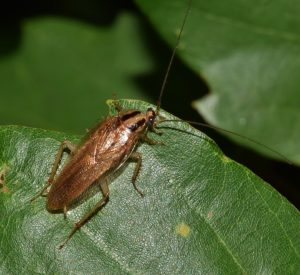
The Unwanted Guests: Facts About Cockroaches: A Deep Dive into the World of Cockroaches
Cockroaches. Just the word conjures up images of scurrying, skittering creatures, unwelcome in our homes and often regarded with disgust. But beyond the revulsion, these resilient insects hold a fascinating place in the natural world. This post explores the world of cockroaches, delving into their biology, behavior, and surprising resilience.
Evolutionary Survivors: A Long and Successful History
Cockroaches have been around for a very long time, even predating dinosaurs. Fossils reveal they existed over 300 million years ago, making them one of the most ancient insect groups. This incredible longevity is a testament to their adaptability. They have survived mass extinctions and thrived in diverse environments, from tropical rainforests to arid deserts.
More Than Just Pests: A Diverse World of Cockroaches
While most people associate cockroaches with the common household pests, there are over 4,000 species worldwide. Only a small percentage of these are considered true nuisances. Many are fascinating creatures, with vibrant colors, specialized diets, and unique behaviors. For example, the rhinoceros cockroach of Australia can grow up to 3 inches (7.62cm!!) long and weighs more than an adult mouse.
Unveiling the Secrets of Cockroach Biology:
Body Structure: Cockroaches possess a flattened, oval-shaped body with a hard, chitinous exoskeleton. Their antennae are long and flexible, acting as sensory organs, detecting odors and vibrations. Their legs are strong and spiny, allowing them to navigate challenging terrain and move quickly.
Lifespan: The lifespan of a cockroach varies depending on the species. Some live only a few months, while others can live for several years. The average lifespan of a common household cockroach is about a year.
Reproduction: Cockroaches reproduce sexually. The female cockroach lays eggs in an egg capsule called an ootheca. The ootheca can contain up to 50 eggs, and it is often attached to a surface or carried by the female.
Dietary Diversity: Cockroaches are opportunistic omnivores, feeding on a wide variety of food sources. They are attracted to decaying organic matter, food scraps, and even paper and cardboard. Some species specialize in specific diets, such as the wood-eating cockroach that feeds on decaying wood.
Adaptation and Resilience: Why Cockroaches Thrive
Cockroaches are masters of survival, possessing remarkable adaptations that contribute to their success:
Flattened bodies: Their flattened bodies allow them to squeeze into narrow spaces, making them difficult to exterminate.
Hard exoskeletons: Their tough exoskeletons protect them from predators and crushing forces.
Fast reflexes: Their fast reflexes allow them to evade predators and quickly escape dangerous situations.
Ability to hold their breath for long periods: Cockroaches can hold their breath for several minutes, allowing them to survive in environments with limited oxygen.
Incredible tolerance for radiation: Some species have shown a remarkable ability to withstand high levels of radiation, leading to speculation about their potential for survival in post-apocalyptic scenarios.
Cockroaches and Human Interaction: From Pest to Symbol
Cockroaches are often seen as pests, contaminating food and spreading diseases. However, they also play a role in the ecosystem, contributing to decomposition and nutrient cycling.
In some cultures, cockroaches are even seen as symbols of good luck or resilience. In China, for example, they are associated with wealth and fortune.
Living with Cockroaches: Understanding and Control
Preventing cockroach infestations is key to minimizing their presence in our homes. This involves:
Using pest control measures: If you have a cockroach infestation, it is important to use appropriate pest control measures. At Pest Portal Zimbabwe, we provide reliable, affordable and professional roach control services for residential, commercial and industrial clients.
Maintaining cleanliness: Regularly cleaning up food spills, crumbs, and trash is essential.
Storing food properly: Keeping food in airtight containers and sealed bags can prevent cockroaches from accessing it.
Eliminating sources of moisture: Cockroaches are attracted to damp areas, so fixing leaks and reducing humidity in your home can help.
Sealing cracks and crevices: Cockroaches can easily squeeze through tiny openings, so sealing any cracks or crevices in your home can help prevent them from entering.
Conclusion: Beyond the Disgust
Cockroaches are fascinating and resilient creatures, playing a complex role in the natural world. While they can be unwelcome guests in our homes, understanding their biology, behavior, and adaptations allows us to appreciate their role in the ecosystem and develop effective strategies for controlling them. Whether you love them or hate them, there’s no denying that cockroaches are among the most successful and enduring life forms on the planet.


